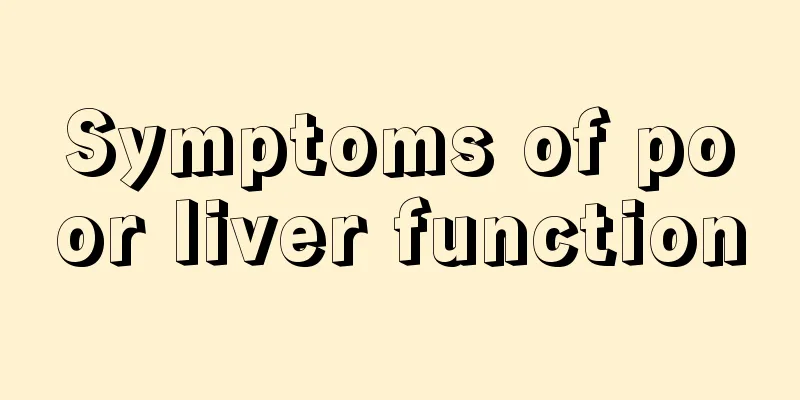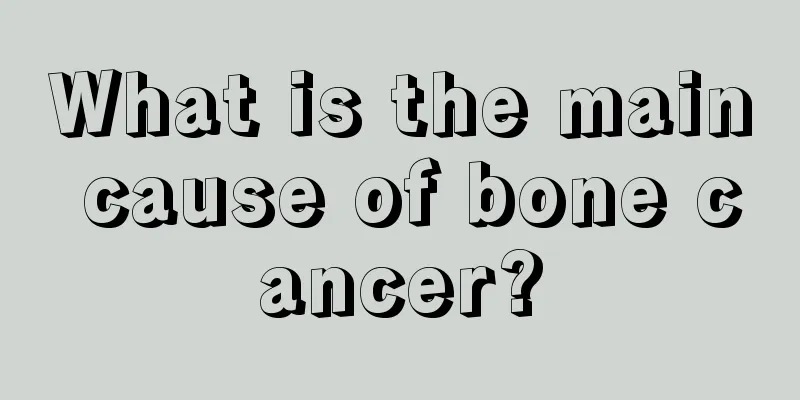Symptoms of poor liver function

|
Poor liver function is mainly reflected in our transaminase. Many patients will have their blood checked when they go to the hospital for a physical examination. During the blood test, if we have eaten, we will find that the transaminase is elevated, but if we are fasting, our transaminase is normal. However, if the transaminase is high even when fasting, it means that the patient has a problem with the liver. So what are the manifestations of poor liver function? 1. Elevated transaminase Transaminase is a key indicator in liver function tests. Abnormally elevated transaminase indicates liver function metabolic problems and liver cell damage. Serum transaminases and other enzymes were elevated, and cholinesterase was decreased. 2. Edema Abnormal liver function leads to abnormal albumin synthesis. When albumin is low and the colloid concentration is high, the blood flows through the blood vessels and causes ascites and pleural effusion. 3. Skin congestion Symptoms include bleeding gums and nosebleeds when brushing teeth in the morning. Due to the disorder of hepatic coagulation factor synthesis, patients experience bleeding symptoms. Including skin bruises and bleeding spots. 4. Systemic symptoms Weight loss, fatigue, dry and dull skin indicate poor nutritional status, irregular fever and other symptoms of liver disease. 5. Digestive tract symptoms Vomiting, upper abdominal discomfort, loss of appetite, etc. are often felt after meals. The tolerance to protein and fat is poor, and diarrhea is easy to occur after eating greasy food. Abdominal discomfort occurs due to bloating and ascites. Some people also develop jaundice, a yellowing of the skin and sclera. 6. Anemia Coagulation dysfunction and gastrointestinal bleeding. Malnutrition causes lack of folic acid, iron, vitamin B12, etc., leading to various bleeding and anemia symptoms. 7. Loss of appetite The liver is also an important digestive organ. When liver function declines, people will eat less and have a loss of appetite. It is also accompanied by a series of gastrointestinal symptoms, such as diarrhea and thick stools. 8. Dark complexion That is, the face becomes dark and rough, and the lips are dark. Due to the decline in liver function, the capillaries dilate, and liver palms and spider nevi appear. 9. Pain in the liver area The liver area is located in the right upper abdomen. Pain and swelling here are often suspected to be caused by decreased liver function, which is related to inflammatory lesions of the liver. Therefore, patients can feel pain in the liver area. 10. Yellow eyes In people with impaired liver function, bilirubin accumulates in the blood, causing the skin and eyes to turn yellow, and the urine and feces to have varying degrees of dark color, which are all manifestations of jaundice. |
>>: How to improve liver function
Recommend
How is the effect of liver cancer surgery? What are the most effective treatments for lung cancer?
How effective is liver cancer surgery? Primary li...
What are the symptoms before death from advanced liver cancer? Five common symptoms before death from advanced liver cancer
When it comes to the symptoms before death in the...
The dangers of drinking mineral water, you need to know these
Long-term drinking of mineral water is harmful to...
What are the effects and functions of puerarin?
Pueraria root is a Chinese herbal medicine that c...
What causes shaking fingers?
Fingers are generally relatively calm, but once a...
Can I cut my hair when I'm pregnant?
I often hear people from the older generation say...
Can I eat beef after rhinoplasty
After rhinoplasty, you need to control your diet ...
What is sciatic foramen hernia
I believe many people have never heard of the unf...
Can you still eat mung bean sprouts if they turn red?
Mung bean sprouts are a nutritious, healthy and d...
The symptoms of rheumatoid arthritis of the knee are like this
Rheumatoid arthritis is now a relatively common d...
Cervical cancer screening
As we all know, cervical cancer is a common malig...
What is the best way to treat fatty liver?
Our living conditions are better now, but more an...
After drinking yogurt, the mold is gone
In addition to not paying attention to personal h...
What should I do if my feet are swollen due to athlete's foot
Athlete's foot is a skin disease that not onl...
How can I slim my face by doing fitness?
In daily life, having a big face is a problem tha...









